


RobertSchneiker.com

The Sphinx head is too small for the body. That
fact is obvious to anyone who sees the enormous
artwork. It just does not look right. The
proportions are wrong. One can only stare and
wonder “What was the artist thinking?”
In August 1976 I was part of a team painting a
mural on the Marc Plaza hotel parking structure in
downtown Milwaukee. Nearly a block long and
over four stories tall, this artwork approaches the
scale of the Sphinx in Egypt. I was a hired hand
working for food and beer. The artist was Sachio
Yamashita from Japan. He told me he came to the
United States as a reporter to cover the 1968
Democratic Convention in Chicago, Illinois. Then,
like now, the United States was a divided country.
Senator Robert F. Kennedy, the presumptive
Democratic candidate had been assassinated two
months prior in June, as had Martin Luther King Jr.
that April. Meanwhile, outside the convention hall
protests to end the war in Vietnam turned violent.
As an outsider, Sachio had difficulty understanding
what was going on.
In addition to being a political reporter and artist, Sachio was a restaurant reporter and a beer connoisseur. As a foodie, he felt
he could not really understand the people of the United States until he tasted their beer. Everyone told him the beer comes
from Milwaukee, so he headed north. He believed he was about to visit one of the coolest places on Earth: a city named the
Milky Way as in the galaxy, that also brews beer! The misunderstanding was Sachio’s own doing as he had mistakenly translated
Milwaukee to Japanese as “Milky Way”. Perhaps it had something to do with Wisconsin being the Dairy State.
It was in Wisconsin that Sachio learned about Native American effigy mounds. Wisconsin has the highest concentration of effigy
mounds anywhere in the world. Between about 600–1100 CE, some 15,000–20,000 effigy mounds were constructed in Southern
Wisconsin. Effigy mounds were constructed in the form of animals and ancestral spirit beings of importance to the Native
Americans. It is thought the mounds principally functioned as spiritual or religious sites, although some have served as burial
sites.
It was in Wisconsin that the Mound Builders, as they are known, built the only intaglios to be found anywhere in the World.
Intaglios are depressions in the ground sculptured in the shape of animals and spirits, making them the exact opposite of an
effigy mound. The only known remaining intaglio is in Fort Atkinson, Wisconsin. Occasionally after a heavy downpour the
depression fills with water, bringing the water spirit to life.
The Mound Builders mark the transition from hunter-
gatherers to agriculture. Although maize had long been
cultivated in Central and South America, farming did
not reach the Upper Midwest until much later. Perhaps
not surprisingly, the switch to agriculture roughly
coincides with a global warming event known as the
Medieval Warm Period from 900–1300 CE. You can learn
more about the effigy mounds and intaglios at this
presentation by Robert Birmingham a former Wisconsin
state archaeologist.
The mural we were painting was Sachio’s
interpretation of a thunderbird effigy mound modified
to fit the proportions of the parking structure. To Native Americans, thunderbirds are symbols of great power and strength. They
offer protection from evil spirits. Perhaps I am biased, but I see the influence of effigy mounds in much of Sachio’s work,
including perhaps his most famous mural “Balance of Power” in Chicago. It can be seen briefly in the famous car chase in the
Blues Brothers movie. A brief profile of Sachio and his work can be seen in this episode of Chicago Tonight.
Sachio worked from a drawing to create the mural. The
drawing had to account for the horizontal parking floors
and vertical slats. The background was painted a solid
color, while the thunderbird itself was colored with
Sachio’s signature rainbow stripe motif. A bringing
together of the old and the new.
The drawing served a dual purpose. Sachio used the
drawing to sell the project to the hotel management.
This gave the decision makers an opportunity to see what
the finished mural would look like. Next using the lift
Sachio transferred the drawing to the parking structure,
using the vertical slats and parking floors as a guide.
I was one of four volunteers. In groups of two, we took
turns painting. One person used a paint roller while the
other operated the lift. Sachio directed the activities
from below. I once saved the day by repairing a leak in
the lift hydraulic line. We were on a tight schedule and
did not have time to wait for a mechanic from the lift
rental company to make the repair. Besides, I saw it
was an easy fix using the available tools.
Soon the work became routine. We would paint all day,
stopping for a quick lunch. At night we dined on hotel
food served from one of the finest restaurants in
Milwaukee, drinking imported German beer at the
hotel bar until late into the night. All costs were
covered by the hotel. We returned the next morning to
repeat the process.
With perfect summer weather, we were ahead of schedule as we began our final day of painting. Working from left to right and
bottom up, we have painted everything but the head. Sachio joined me in the bucket to outline the final section. Using the lift
controls, I raised us, but we stop short. I tried repositioning the lift, yet still we could not reach high enough to draw the head. I
got a sinking feeling, as I wonder if my repair was to blame. No, it turned out the lift was just too small.
Sachio had measured the height of the parking structure. His measurements were used to determine how large a lift was
required to paint the mural. Unfortunately, he had forgotten to account for the slope of the land.
Working from left to right no one realize the sloping ground meant the undersized lift could not reach the upper right section of
the mural. By the time we reached the far end, the ground had dropped a full story.
We considered various options. A larger lift was suggested and quickly dismissed due to time constraints. Next, we tried painting
the head using extremely long extensions. First, we painted as high as possible from the lift. Then working from the top floor,
we took turns leaning over, blood rushing to our heads, reaching as far as we could from the top of the parking ramp. It felt as if
we were painting while preparing to perform a somersault five stories up, off the edge of the building. With guidance from the
ground and help from others, we eventually managed to paint the background.
However, it was extremely difficult, almost impossible, to paint a sharp line with a 10-foot extension. Our attempts to paint the
head with extension rollers was disastrous and completely unacceptable. Still, at least, we were able to paint the background
color. The attempt also gave us some idea of how high we could effectively paint details.
Hours passed; nothing was resolved. We were running out of time. I realized that, as an artist, Sachio wanted to stay true to the
original drawing, yet we all knew that was impossible. We were in a predicament. Sachio knew what had to be done but could
not bring himself to do it. I took the drawing from his hands and sketched a smaller head. I am no artist, and, worst of all, my
drawing was not based on aesthetics. It was solely based on what I thought we could reach. It lacked any artistic style, in part
because I had to attempt to blend it in with the portion we had already painted. Somewhat reluctantly and somewhat relieved,
Sachio agreed. Suddenly, I was the artist.
Even my smaller head turned out to be nearly impossible to paint. Extending the lift as far as possible, Tim, another assistant,
climbed higher, standing on a lower handrail so he could reach as high as possible. I remember holding on to Tim’s legs as he
painted the head. It was not nearly as sharp a line as the rest of the mural but, it was done. That evening our beer never tasted
so good. We were especially relieved that no one had died. For many years, whenever I drove past I would look up and think to
myself: “The head is too small”.
The beak that was supposed to peak near the top of the fourth floor now dropped to the middle of the third floor. I had turned a
depiction of a powerful soaring thunderbird into that of a weakened, nose-diving disproportionate caricature. Worst of all was
the beak. Rather than a magnificent powerful thunderbird, the mural now looked more like a canary.
Today the mural is gone. It was destroyed when the parking structure was replaced with a larger version. Gone, too, are most of
the other murals and even Sachio himself.
Major Fissure
It turns out the builders of the Sphinx faced a similar problem. Carving from the top down, they uncovered a small cave as they worked. Hidden beneath the weather resistant Member III capstone, the cave lay undiscovered until workers reached the back of the Sphinx. The cave was formed over millions of years by acidic groundwater that had slowly dissolve the limestone. In places, this gave the limestone a Swiss cheese like appearance. Elsewhere, dissolution widened the bedrock fractures, in some places wide enough to create caves. I remember visiting a similar cave in a remote section of Canyonlands National Park in Utah years ago. The cave was wide enough to walk through, yet, at the surface above, it was a barely discernable crack. In the cave, I had to be careful while walking as the crack shrank to be slightly wider than my foot, but not wide enough to fall through. The fracture continued for some unknown distance downward past the cave floor. Almost exactly like at the Sphinx, acidic groundwater had slowly sculptured a cave, leaving the more resistant layers above and below relatively untouched. Prior to construction, there was no way for the Sphinx artist to know that the Major Fissure was any different from any of the other fractures that cross the ground. Then, like Sachio 4,500 years later, the artist faced a dilemma. The cave crossed the Sphinx body exactly where the rear paws should be. The Major Fissure divided the Sphinx into two parts. There was only one option: span the gap with limestone blocks and elongate the body. This allowed the rear paws to be carved in the higher quality Member I limestone. The result was the same as with Sachio’s thunderbird -- the head was now too small for the body. Hoping to stay true to the original plan, the artist, like Sachio, probably found it difficult to alter the drawing. I can’t help but wonder if it wasn’t the artist, but another volunteer, many years ago, who had the gumption to make the change. Monolith or Megalith The Sphinx is often referred to as a monolith. Monolith is an archaeological term used to describe prehistoric structures constructed from a single large block of stone. Examples include the ancient Egyptian obelisks and the T-pillars of Göbekli Tepe. Monolith is also a geologic term used to describe a single massive rock outcrop. Perhaps the best-known example is Uluru (Ayers Rock) in the Northern Territory of Australia. As the Sphinx limestone is broken by a series of bedrock fractures, it cannot be considered a monolith in a geologic sense. Using either the archaeological or geological definition the Sphinx is clearly not a monolith. Megalith Megalith is an archaeological term to describe prehistoric stone structures or monuments constructed using multiple large stones. An example would be the ancient Egyptian pyramids. Since large limestone blocks filled the Major Fissure gap, it seems the Sphinx would appear to be a megalith. Monolith Yet archaeologists, even those who know blocks were used to fill the Major Fissure, continue to refer to the Sphinx as a monolith. The confusion comes from archaeology. Their definition of a monolith includes any stone structure or monument that contains at least one massive stone, even if smaller stones were also used. Using that definition, archaeologists consider the Sphinx a monolith, even though the Sphinx itself was not carved from a single piece of bedrock as is commonly assumed.Battle of the Geologists
The Great Sphinx, which sits in front of the three great pyramids on the Giza Plateau in Egypt, has been the subject of controversy with regard to its age. Geologist Robert Schoch claims that it is thousands of years older than Egyptologists say and that it is the product of a lost civilization. Other experts in geology have weighed in on the subject too. What do they think about the geological evidence and the origins of the Sphinx? Dr. Miano at the World of Antiquity tackles this question in this video.Next Newsletter
The Lay of the Land
The Giza Pyramid Complex including the Great Sphinx are said to be part of a plateau. Plateaus are large areas of high flat lying terrain with cliffs on all sides. At Giza, the land slopes towards the South-East, in the direction of the Sphinx. The Sphinx itself sits just 20 meters (66 feet) above sea level and within the Nile River floodplain, certainly not what anyone could consider an elevated terrain. If not a plateau, then what is it? In the next newsletter I use geology to determine what the area looked like prior to construction of the Giza Pyramid Complex, and what it is called. If your have not already registered for the newsletter, click here to receive an email version as soon as it is released.



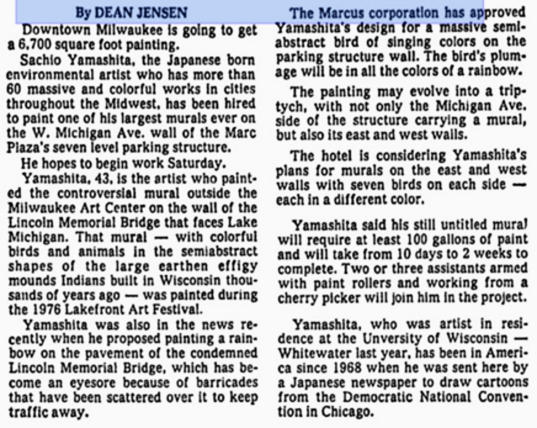
Milwaukee Sentinel Friday August 13, 1976
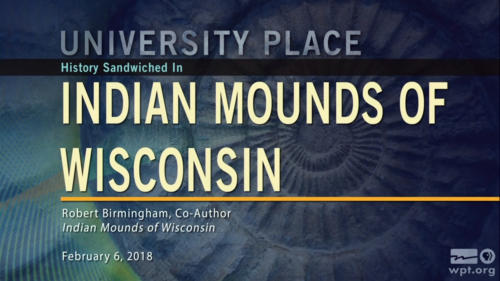

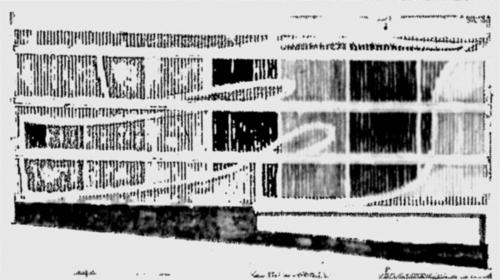
Sachio’s original drawing of the thunderbird mural.
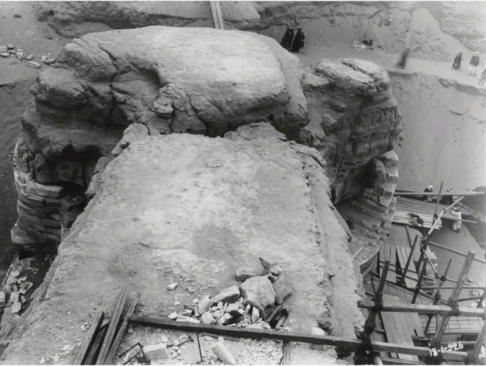
Photo of the Major Fissure prior to repairs in the 1920s.
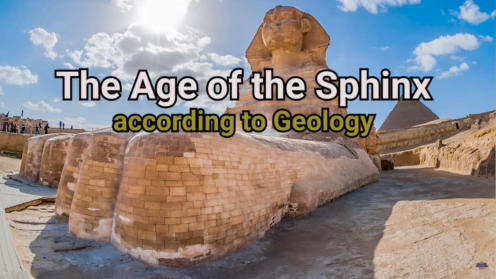
The Sphinx
Head is too Small
Mysteries of the
Great Sphinx

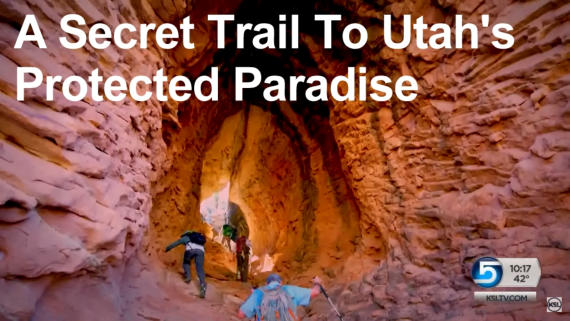
Wormhole Cave, Canyonlands National Park
I visited this cave prior to the area being closed for scientific study. Even then I
never enter the “arena” itself to protect the integrity of the scientific research.






© Robert Adam Schneiker 2023
RobertSchneiker.com
The Sphinx head is too small for the body. That fact
is obvious to anyone who sees the enormous
artwork. It just does not look right. The proportions
are wrong. One can only stare and wonder “What
was the artist thinking?”
In August 1976 I was part of a team painting a mural
on the Marc Plaza hotel parking structure in
downtown Milwaukee. Nearly a block long and over
four stories tall, this artwork approaches the scale
of the Sphinx in Egypt. I was a hired hand working
for food and beer. The artist was Sachio Yamashita
from Japan. He told me he came to the United
States as a reporter to cover the 1968 Democratic
Convention in Chicago, Illinois. Then, like now, the
United States was a divided country. Senator Robert
F. Kennedy, the presumptive Democratic candidate
had been assassinated two months prior in June, as
had Martin Luther King Jr. that April. Meanwhile,
outside the convention hall protests to end the war
in Vietnam turned violent. As an outsider, Sachio had
difficulty understanding what was going on.
In addition to being a political reporter and artist,
Sachio was a restaurant reporter and a beer
connoisseur. As a foodie, he felt he could not really
understand the people of the United States until he
tasted their beer. Everyone told him the beer comes
from Milwaukee, so he headed north. He believed he
was about to visit one of the coolest places on
Earth: a city named the Milky Way as in the galaxy,
that also brews beer! The misunderstanding was
Sachio’s own doing as he had mistakenly translated
Milwaukee to Japanese as “Milky Way”. Perhaps it
had something to do with Wisconsin being the Dairy
State.
It was in Wisconsin that Sachio learned about Native
American effigy mounds. Wisconsin has the highest
concentration of effigy mounds anywhere in the
world. Between about 600–1100 CE, some
15,000–20,000 effigy mounds were constructed in
Southern Wisconsin. Effigy mounds were constructed
in the form of animals and ancestral spirit beings of
importance to the Native Americans. It is thought
the mounds principally functioned as spiritual or
religious sites, although some have served as burial
sites.
It was in Wisconsin that the Mound Builders, as they
are known, built the only intaglios to be found
anywhere in the World. Intaglios are depressions in
the ground sculptured in the shape of animals and
spirits, making them the exact opposite of an effigy
mound. The only known remaining intaglio is in Fort
Atkinson, Wisconsin. Occasionally after a heavy
downpour the depression fills with water, bringing
the water spirit to life.
The Mound Builders mark the transition from hunter-
gatherers to agriculture. Although maize had long
been cultivated in Central and South America,
farming did not reach the Upper Midwest until much
later. Perhaps not surprisingly, the switch to
agriculture roughly coincides with a global warming
event known as the Medieval Warm Period from
900–1300 CE. You can learn more about the effigy
mounds and intaglios at this presentation by Robert
Birmingham a former Wisconsin state archaeologist.
The mural we were painting was Sachio’s
interpretation of a thunderbird effigy mound
modified to fit the proportions of the parking
structure. To Native Americans, thunderbirds are
symbols of great power and strength. They offer
protection from evil spirits. Perhaps I am biased, but
I see the influence of effigy mounds in much of
Sachio’s work, including perhaps his most famous
mural “Balance of Power” in Chicago. It can be seen
briefly in the famous car chase in the Blues Brothers
movie. A brief profile of Sachio and his work can be
seen in this episode of Chicago Tonight.
Sachio worked from a drawing to create the mural.
The drawing had to account for the horizontal
parking floors and vertical slats. The background was
painted a solid color, while the thunderbird itself
was colored with Sachio’s signature rainbow stripe
motif. A bringing together of the old and the new.
The drawing served a dual purpose. Sachio used the
drawing to sell the project to the hotel
management. This gave the decision makers an
opportunity to see what the finished mural would
look like. Next using the lift Sachio transferred the
drawing to the parking structure, using the vertical
slats and parking floors as a guide.
I was one of four volunteers. In groups of two, we
took turns painting. One person used a paint roller
while the other operated the lift. Sachio directed
the activities from below. I once saved the day by
repairing a leak in the lift hydraulic line. We were on
a tight schedule and did not have time to wait for a
mechanic from the lift rental company to make the
repair. Besides, I saw it was an easy fix using the
available tools.
Soon the work became routine. We would paint all
day, stopping for a quick lunch. At night we dined on
hotel food served from one of the finest restaurants
in Milwaukee, drinking imported German beer at the
hotel bar until late into the night. All costs were
covered by the hotel. We returned the next morning
to repeat the process.
With perfect summer weather, we were ahead of
schedule as we began our final day of painting.
Working from left to right and bottom up, we have
painted everything but the head. Sachio joined me
in the bucket to outline the final section. Using the
lift controls, I raised us, but we stop short. I tried
repositioning the lift, yet still we could not reach
high enough to draw the head. I got a sinking
feeling, as I wonder if my repair was to blame. No, it
turned out the lift was just too small.
Sachio had measured the height of the parking
structure. His measurements were used to
determine how large a lift was required to paint the
mural. Unfortunately, he had forgotten to account
for the slope of the land.
Working from left to right no one realize the sloping
ground meant the undersized lift could not reach the
upper right section of the mural. By the time we
reached the far end, the ground had dropped a full
story.
We considered various options. A larger lift was
suggested and quickly dismissed due to time
constraints. Next, we tried painting the head using
extremely long extensions. First, we painted as high
as possible from the lift. Then working from the top
floor, we took turns leaning over, blood rushing to
our heads, reaching as far as we could from the top
of the parking ramp. It felt as if we were painting
while preparing to perform a somersault five stories
up, off the edge of the building. With guidance from
the ground and help from others, we eventually
managed to paint the background.
However, it was extremely difficult, almost
impossible, to paint a sharp line with a 10-foot
extension. Our attempts to paint the head with
extension rollers was disastrous and completely
unacceptable. Still, at least, we were able to paint
the background color. The attempt also gave us
some idea of how high we could effectively paint
details.
Hours passed; nothing was resolved. We were
running out of time. I realized that, as an artist,
Sachio wanted to stay true to the original drawing,
yet we all knew that was impossible. We were in a
predicament. Sachio knew what had to be done but
could not bring himself to do it. I took the drawing
from his hands and sketched a smaller head. I am no
artist, and, worst of all, my drawing was not based
on aesthetics. It was solely based on what I thought
we could reach. It lacked any artistic style, in part
because I had to attempt to blend it in with the
portion we had already painted. Somewhat
reluctantly and somewhat relieved, Sachio agreed.
Suddenly, I was the artist.
Even my smaller head turned out to be nearly
impossible to paint. Extending the lift as far as
possible, Tim, another assistant, climbed higher,
standing on a lower handrail so he could reach as
high as possible. I remember holding on to Tim’s legs
as he painted the head. It was not nearly as sharp a
line as the rest of the mural but, it was done. That
evening our beer never tasted so good. We were
especially relieved that no one had died. For many
years, whenever I drove past I would look up and
think to myself: “The head is too small”.
The beak that was supposed to peak near the top of
the fourth floor now dropped to the middle of the
third floor. I had turned a depiction of a powerful
soaring thunderbird into that of a weakened, nose-
diving disproportionate caricature. Worst of all was
the beak. Rather than a magnificent powerful
thunderbird, the mural now looked more like a
canary.
Today the mural is gone. It was destroyed when the
parking structure was replaced with a larger version.
Gone, too, are most of the other murals and even
Sachio himself.
Major Fissure
It turns out the builders of the Sphinx faced a similar problem. Carving from the top down, they uncovered a small cave as they worked. Hidden beneath the weather resistant Member III capstone, the cave lay undiscovered until workers reached the back of the Sphinx. The cave was formed over millions of years by acidic groundwater that had slowly dissolve the limestone. In places, this gave the limestone a Swiss cheese like appearance. Elsewhere, dissolution widened the bedrock fractures, in some places wide enough to create caves. I remember visiting a similar cave in a remote section of Canyonlands National Park in Utah years ago. The cave was wide enough to walk through, yet, at the surface above, it was a barely discernable crack. In the cave, I had to be careful while walking as the crack shrank to be slightly wider than my foot, but not wide enough to fall through. The fracture continued for some unknown distance downward past the cave floor. Almost exactly like at the Sphinx, acidic groundwater had slowly sculptured a cave, leaving the more resistant layers above and below relatively untouched. Prior to construction, there was no way for the Sphinx artist to know that the Major Fissure was any different from any of the other fractures that cross the ground. Then, like Sachio 4,500 years later, the artist faced a dilemma. The cave crossed the Sphinx body exactly where the rear paws should be. The Major Fissure divided the Sphinx into two parts. There was only one option: span the gap with limestone blocks and elongate the body. This allowed the rear paws to be carved in the higher quality Member I limestone. The result was the same as with Sachio’s thunderbird -- the head was now too small for the body. Hoping to stay true to the original plan, the artist, like Sachio, probably found it difficult to alter the drawing. I can’t help but wonder if it wasn’t the artist, but another volunteer, many years ago, who had the gumption to make the change. Monolith or Megalith The Sphinx is often referred to as a monolith. Monolith is an archaeological term used to describe prehistoric structures constructed from a single large block of stone. Examples include the ancient Egyptian obelisks and the T-pillars of Göbekli Tepe. Monolith is also a geologic term used to describe a single massive rock outcrop. Perhaps the best-known example is Uluru (Ayers Rock) in the Northern Territory of Australia. As the Sphinx limestone is broken by a series of bedrock fractures, it cannot be considered a monolith in a geologic sense. Using either the archaeological or geological definition the Sphinx is clearly not a monolith. Megalith Megalith is an archaeological term to describe prehistoric stone structures or monuments constructed using multiple large stones. An example would be the ancient Egyptian pyramids. Since large limestone blocks filled the Major Fissure gap, it seems the Sphinx would appear to be a megalith. Monolith Yet archaeologists, even those who know blocks were used to fill the Major Fissure, continue to refer to the Sphinx as a monolith. The confusion comes from archaeology. Their definition of a monolith includes any stone structure or monument that contains at least one massive stone, even if smaller stones were also used. Using that definition, archaeologists consider the Sphinx a monolith, even though the Sphinx itself was not carved from a single piece of bedrock as is commonly assumed.Battle of the Geologists
The Great Sphinx, which sits in front of the three great pyramids on the Giza Plateau in Egypt, has been the subject of controversy with regard to its age. Geologist Robert Schoch claims that it is thousands of years older than Egyptologists say and that it is the product of a lost civilization. Other experts in geology have weighed in on the subject too. What do they think about the geological evidence and the origins of the Sphinx? Dr. Miano at the World of Antiquity tackles this question in this video.Next Newsletter
The Lay of the Land
The Giza Pyramid Complex including the Great Sphinx are said to be part of a plateau. Plateaus are large areas of high flat lying terrain with cliffs on all sides. At Giza, the land slopes towards the South- East, in the direction of the Sphinx. The Sphinx itself sits just 20 meters (66 feet) above sea level and within the Nile River floodplain, certainly not what anyone could consider an elevated terrain. If not a plateau, then what is it? In the next newsletter I use geology to determine what the area looked like prior to construction of the Giza Pyramid Complex, and what it is called. If your have not already registered for the newsletter, click here to receive an email version as soon as it is released.

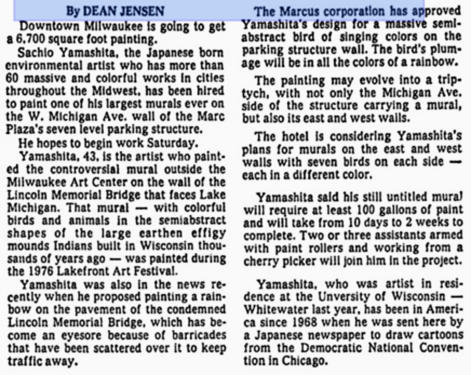
Milwaukee Sentinel Friday August 13, 1976
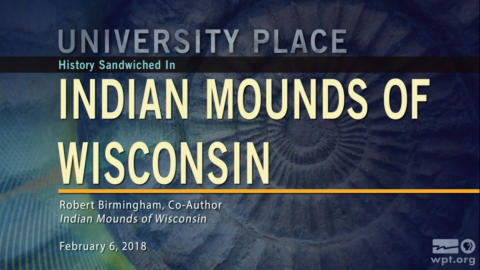

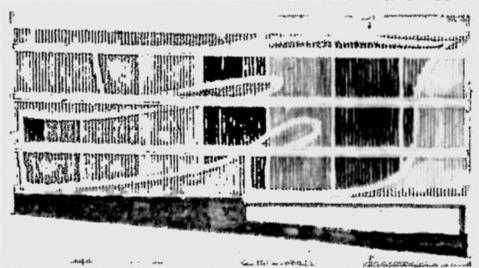
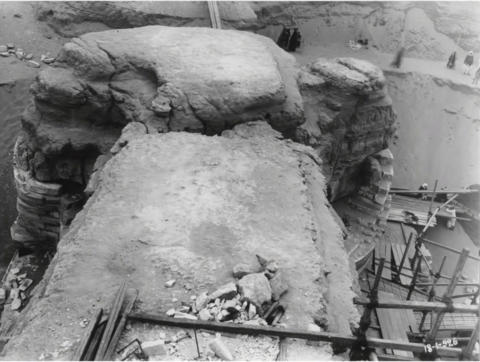
Sachio’s original drawing of the thunderbird mural.


The Sphinx Head is too Small
Mysteries of the
Great Sphinx

Photo of the Major Fissure prior to repairs in the 1920s.
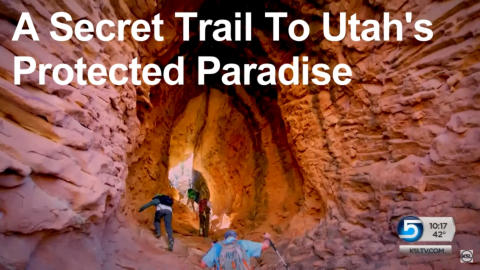
Wormhole Cave, Canyonlands National Park
I visited this cave prior to the area being closed for scientific study.
Even then I never enter the “arena” itself to protect the integrity of
the scientific research.

























